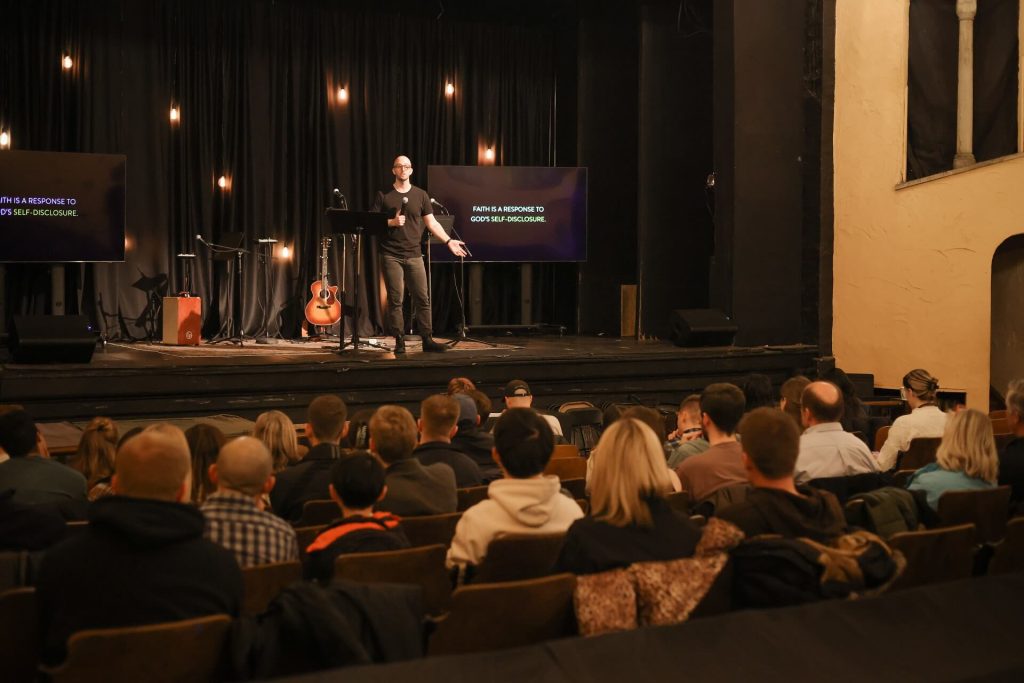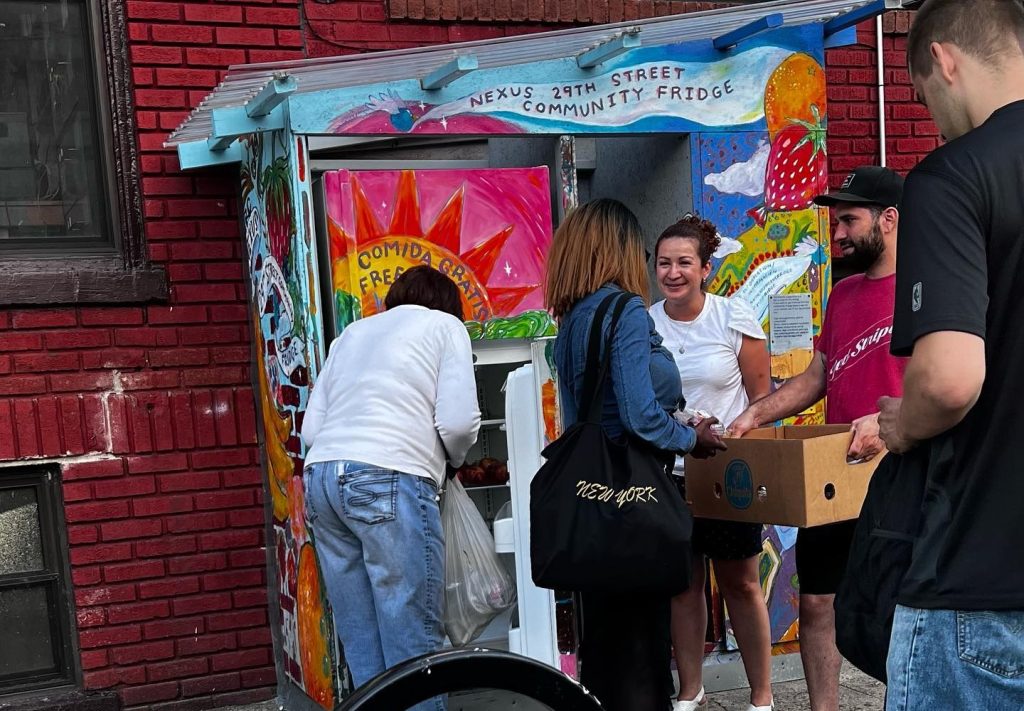Integrating faith and work is rarely a priority in the early stages of church planting. However, Russell Joyce and his team at Hope Brooklyn have been intentional about weaving faith and work into the life of the church from the very beginning. His experience illustrates how even extremely young churches can address faith and work in meaningful ways, and why they should.
What has spurred you to devote energy to faith and work at this early stage of your church plant?
Hope Brooklyn officially launched in April 2017. Before we even launched, we were just forming small groups, which we call “tables.” These are basically meals for people to get to know each other. We had some people who wanted to be there. But as we know, so many people in New York are working ridiculous hours, and they were showing up 30 or 45 minutes late, and flustered. When we saw that, we realized, “Oh goodness, we’ve got to change something for their sake if we want to disciple them well.”
So how have you adjusted the way you set up these small groups to reflect the rhythms of work life in the city?
Basically, once we realized that the classic model of getting off work and going to someone’s home for Bible study just wasn’t going to work in our context, we broadened that. Now we have three different types of tables. We have classic tables, which are meals in the neighborhoods where we live. We have work tables, which are meals in the neighborhoods where we work or around the industries where we work. And we have hobby tables, which are meals around the hobbies that we have.
WE HAVE CLASSIC TABLES, WHICH ARE MEALS IN THE NEIGHBORHOODS WHERE WE LIVE. WE HAVE WORK TABLES, WHICH ARE MEALS IN THE NEIGHBORHOODS WHERE WE WORK OR AROUND THE INDUSTRIES WHERE WE WORK. AND WE HAVE HOBBY TABLES, WHICH ARE MEALS AROUND THE HOBBIES THAT WE HAVE.
Regarding our work tables, we’ve started a table in the NoHo area and a table in the FiDi area. These are areas outside the neighborhood where our church meets, but a lot of people at Hope Brooklyn commute there for work. For example, pretty much all of the members of the FiDi table are people who live in Brooklyn, but work in that area. The FiDi table meets up for happy hour on Wednesdays after work, and even though that group is not designed to talk exclusively about how the gospel intersects with their work, its structure allows the conversation about spiritual formation to naturally enter into how are we spiritually formed in our work right now.
Last year, we also had a writer’s table for people who are in all sorts of professions, but love to write. Though that group stopped meeting around Christmas due to scheduling conflicts, we have maintained an intentional focus on cultivating that artistic spirit through various dinners and other gatherings throughout the year. That’s a really important aspect of faith and work too.
What other ways have you found to weave faith and work into the life of the church in this first year?
For one thing, to kick off our fall last September we did a three-part sermon series on faith and work. We used Tim Keller’s book Every Good Endeavorand talked about how all work is good and all work is broken. We brought in some of the ideas from Dorothy Sayers’s article “Why Work?” And by the end of that series, we saw people beginning to realize, “Oh, my first job as a Christian is not to leave my work and to come to a Bible study, but actually, if I’m a carpenter, my first job is to make really good chairs and tables.” Some of the most consistent feedback we heard about that series was how it helped break down the dichotomy between the sacred and the secular. That was really, again, a reshaping of the imagination. Maybe that’s the best way to describe this first year at Hope Brooklyn: it’s like imaginations have been really broken down and reshaped.
How else have you been trying to shape the imaginations of your people?
Then the last thing we’ve done is what we call the round table, which is basically our membership structure. We have one module each month for four months. The first one deals with the gospel. The second talks about the city: its narratives, the narratives of the gospel, and how they intersect. In the third module, we talk about the self using the Enneagram, and finally we put it all together and empower people to step into a leadership role in the community. Though all of the specifically work-related content, including David Kim’s (Executive Director of the Center for Faith & Work) “Exilic Discipleship” essay, falls in the module on the City, faith and work is a theme that intentionally comes up throughout all four sessions.
We recognize that in our transient context, people probably will move in three to five years. As much as we don’t want it to happen, as much as we challenge that narrative, they probably will. As a result, they’re not going to want to join a church knowing that they’re going to be gone in three to five years. Instead, we’ve sort of framed it as, “We want to empower you for discipleship while you’re here to commit fully to this.”
What do you hope to see in your church as this shaping of the imagination continues?
Hopefully, by the time someone finishes the last module of our membership structure, we’re not just onboarding and plugging people into the community, though that might happen in some cases. What we really want is new ministries and new ideas to be generated. People are saying, “Oh, I’m made like this, and I work in this industry, and I see this way, and I see the gospel like this. What if we tried this?” Then we want to say, “Awesome, let’s go for it. How do we empower you?” That’s our way of trying again to make faith and work more a part of the church’s DNA and thinking, and less about a program that we’re adopting.
What would you say are the biggest lessons you’ve learned about addressing faith and work in the early stages of church planting?
You might notice that a lot of what we’re trying to do is accepting the constraints of the city. That has pushed us to get creative. Because we’re just in our first year, I don’t have empirical data if it’s working or not yet. But we have been experimenting and really trying to make faith and work a part of our DNA at Hope Brooklyn.
We’re aiming to make the integration of faith and work part of the way we think, instead of thinking about it as a program. Get my email, and I’ll let you know in a year or two if they’ve worked.
What are the constraints of your context? How are they pushing you to imagine fresh ways to integrate faith and work?
How do people in your context see their work? How would you like to reshape their imaginations regarding what work can be and how it fits in the Kingdom?


